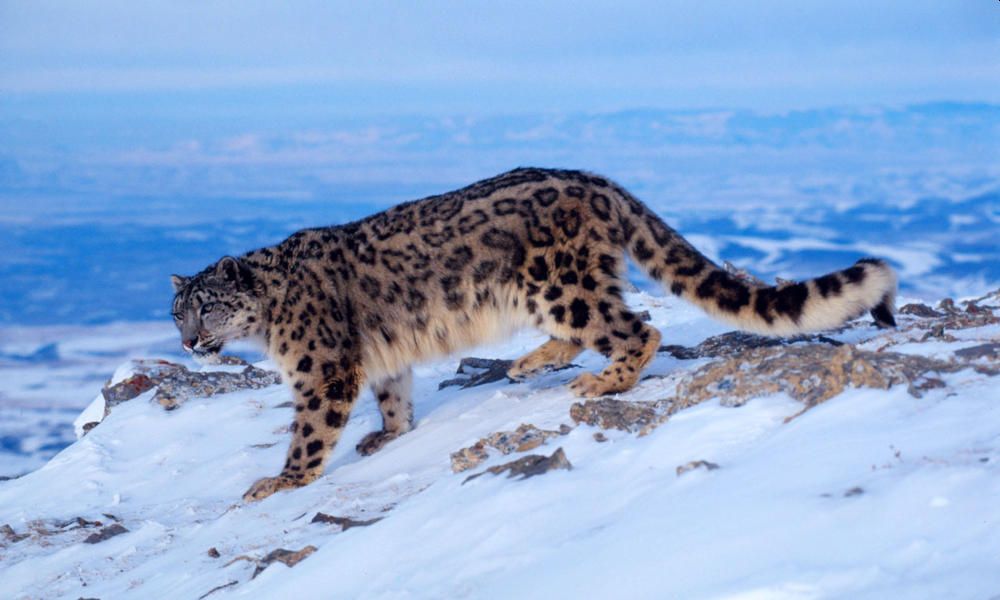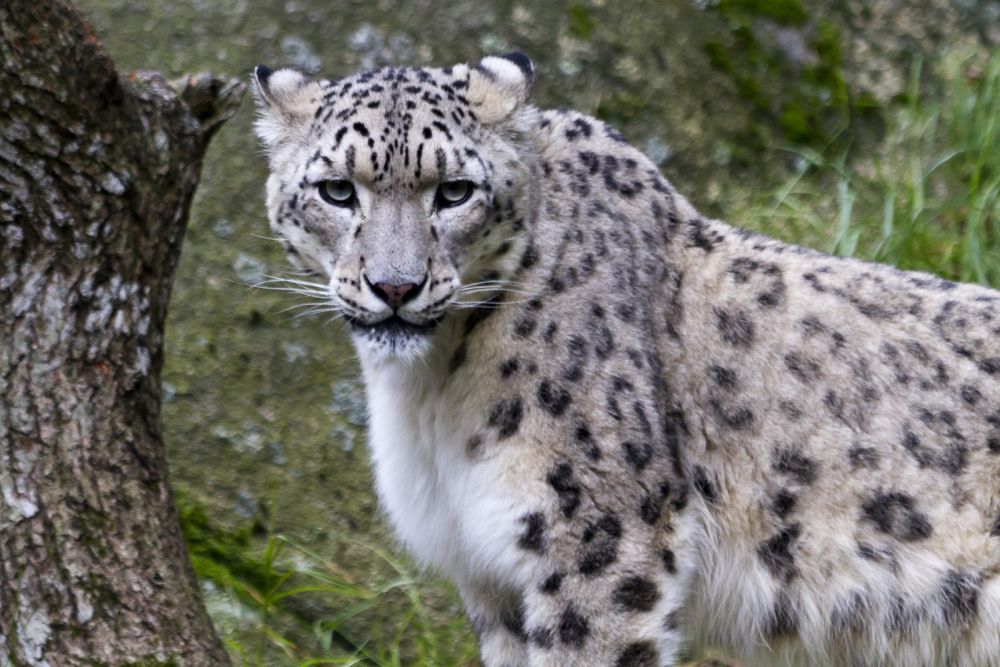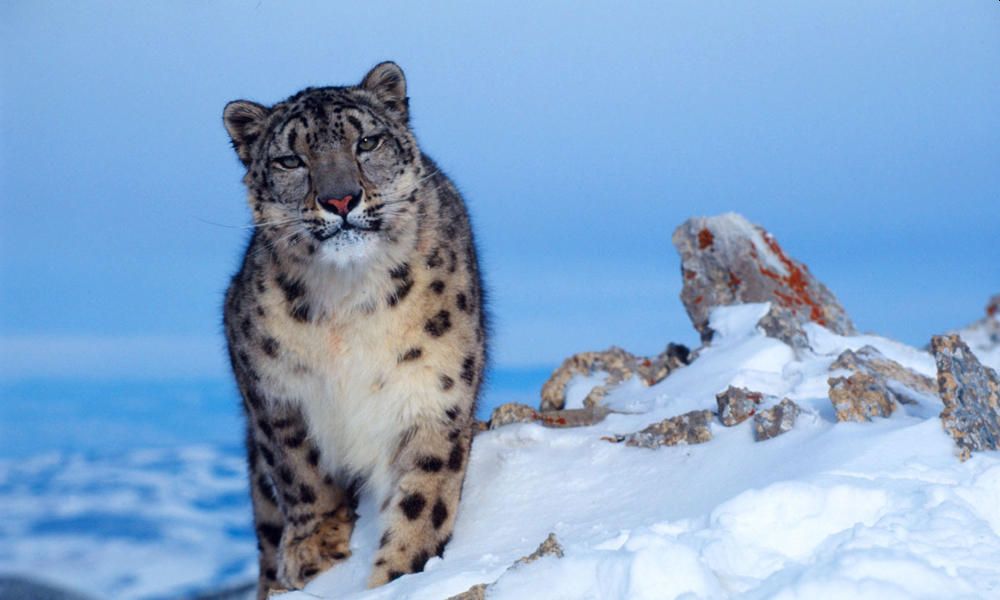Snow Leopard Habitat Shrinks Amid Climate Crisis, Making the Endangered Species More Vulnerable
The charismatic snow leopard is an endangered animal, which is practically facing extinction as its habitat shrinks amid climate change crisis. As the impacts of climate change become increasingly frequent, the snow leopard – an apex predator of the alpine environment – will be among the first to be affected.
The Panthera uncia is a large cat native to the mountain ranges of Central and South Asia. It is listed as “Vulnerable” on the IUCN Red List because the global population is estimated to number less than 10,000 mature individuals and is expected to reduce about 10 percent by 2040.

Image: Klein and Hubert WWF
Usually, the snow leopards descend below 3,000 meters when it snows heavily in winters. Their prey species – bharal (blue sheep), musk deer, Himalayan thar, and ibex also move downhill in search of food.
The animal has been studied more closely in Nepal than in other countries. There have been national and international efforts to save the endangered animal, some of which have been quite helpful to the local residents as well. But, the changing climatic patterns are a serious and imminent threat to the charismatic cat.
Shrinking Snow Leopard Habitat amid Climate Change
The snow leopard plays a crucial role in the ecology of mountain ecosystems. It is an apex predator of the frozen desert. When it hunts, it helps bring balance to the population of prey species like wild goats, foxes, wolves and yak. But imbalances in the ecology of their habitat have already begun to show. The number of resorts in mountainous areas has increased, affecting vegetation and the distribution of wild goats. Climate change only worsens these changes, pushing the big cat closer to extinction.
According to the Intergovernmental Panel on Climate Change (IPCC), the average annual temperature in South Asia and Tibet will increase by 3-4 degrees Celsius by 2080-2099. In addition, annual precipitation in the region will increase as well. As previous studies have described that warmer and wetter conditions may result in forests ascending into alpine areas – the preferred habitat of snow leopards, resultantly the animal would lose their habitat.

Image: Science The Wire
A World Wildlife Fund (WWF) study raises concerns about the possible impact of global climate change on snow leopard habitat. The study used on-the-ground tracking efforts in high elevation areas and computer modeling to determine the impacts of various warming scenarios on the Himalayan portion of the snow leopard range. Warming at high elevations in the Himalayan is already occurring at rates higher than the global average.
A 2012 paper called “Conservation and Climate Change: Assessing the Vulnerability of Snow Leopard Habitat to Treeline Shift in the Himalayas,” concluded that under the IPCC’s high emission scenario, about 30 percent of snow leopard habitat will be vulnerable to change along the Himalayan mountain range.
Even if the global communities find a way to reduce emissions relatively and begin to decrease below current levels by 2050, up to 10 percent of snow leopard habitat could still be lost. What is more disturbing for the species that if forests creep upwards, species adapted to them like the common leopard, dholes and tigers would follow and compete with the snow leopard for food and territory. Moreover, the snow leopards and their prey species would then have to migrate to even higher altitudes.
Disturbingly, anthropogenic threats may be exacerbated under climate change. As alpine habitat shrinks, competition for its resources between livestock and snow leopard prey species would increase, ultimately leading to their local extirpation by humans. The leopard would then hunt livestock, which could lead to human-animal conflicts.
Moreover, communities in mountain regions, who often live near wildlife and are dependent on crops and livestock, are facing great hardships. With dry seasons getting longer and water for irrigation getting scarcer, conflicts over natural resources arise between local mountain communities and animals.
Preservation Efforts
Despite their misdemeanors, humankind has been trying to do better and preserve precious wildlife. In India, the Uttarakhand government announced that it would set up India’s first snow leopard conservation center near Uttarkashi. The state government hopes this will give a boost to winter tourism; many snow leopard enthusiasts visit Himachal Pradesh every winter, while the animal is a part of eco-tourism efforts in Ladakh.

Image: Klein and Hubert WWF
Recently, the IPCC highlighted the need for transformative changes to restore and protect nature. To achieve the climate goals set in the Paris Agreement, it is crucial to halt the biodiversity loss; above all, wildlife in high mountain areas is at risk. These fragile ecosystems are experiencing drastic changes in snow cover, permafrost and glaciers due to global warming.
To protect vulnerable mountain species, conserving mountain ecosystems and their biodiversity, the UN Environment Program (UNEP) and partners launched a project “Vanishing Treasures” in 2018. The project operates in various mountain regions, including the Virungas (Uganda, Rwanda), the Himalayas (Bhutan) and Central Asia (Kyrgyzstan and Tajikistan).
In 2012, when the president of Kyrgyzstan spearheaded efforts using the Global Tiger Initiative as a model, soon it inspired the Global Snow Leopard and Ecosystem Protection Program was formed. It invited the participation of the 12 snow-leopard-range countries: India, Nepal, Bhutan, China, Mongolia, Russia, Pakistan, Afghanistan, Kyrgyzstan, Kazakhstan, Tajikistan and Uzbekistan.
While all these efforts are to protect the beautiful animal from extinction, none of it will matter if humankind fails to stop carbon emissions that are the key driving factor behind climate change.


